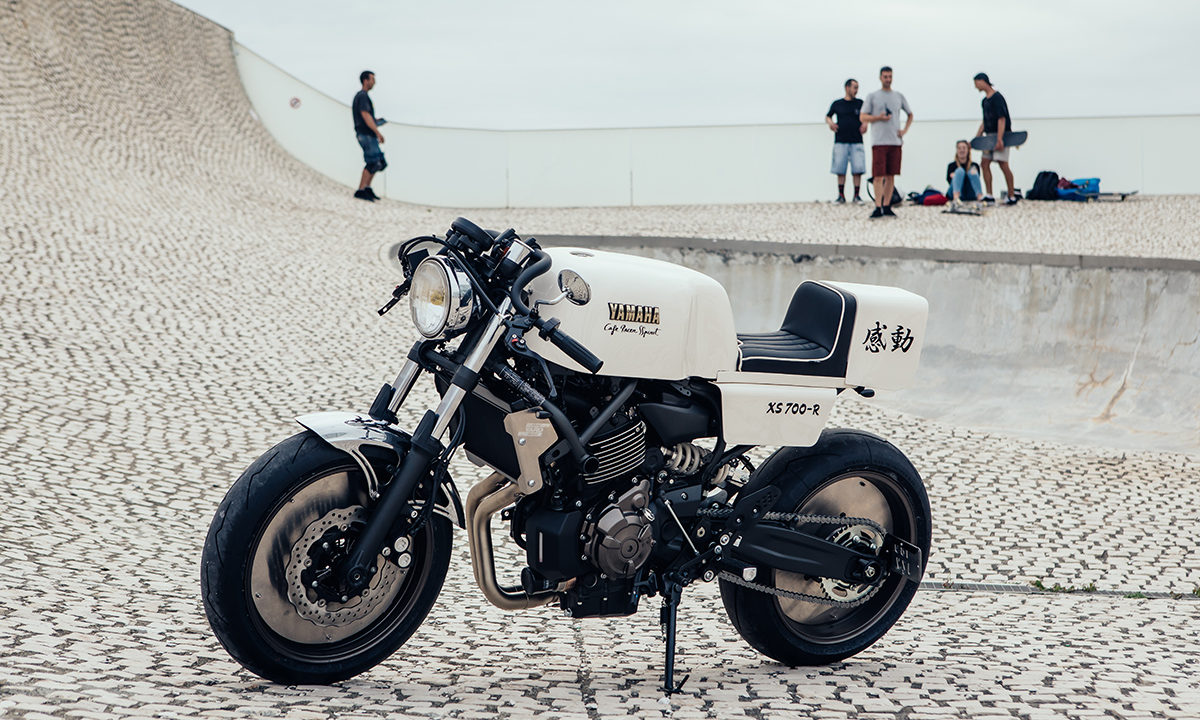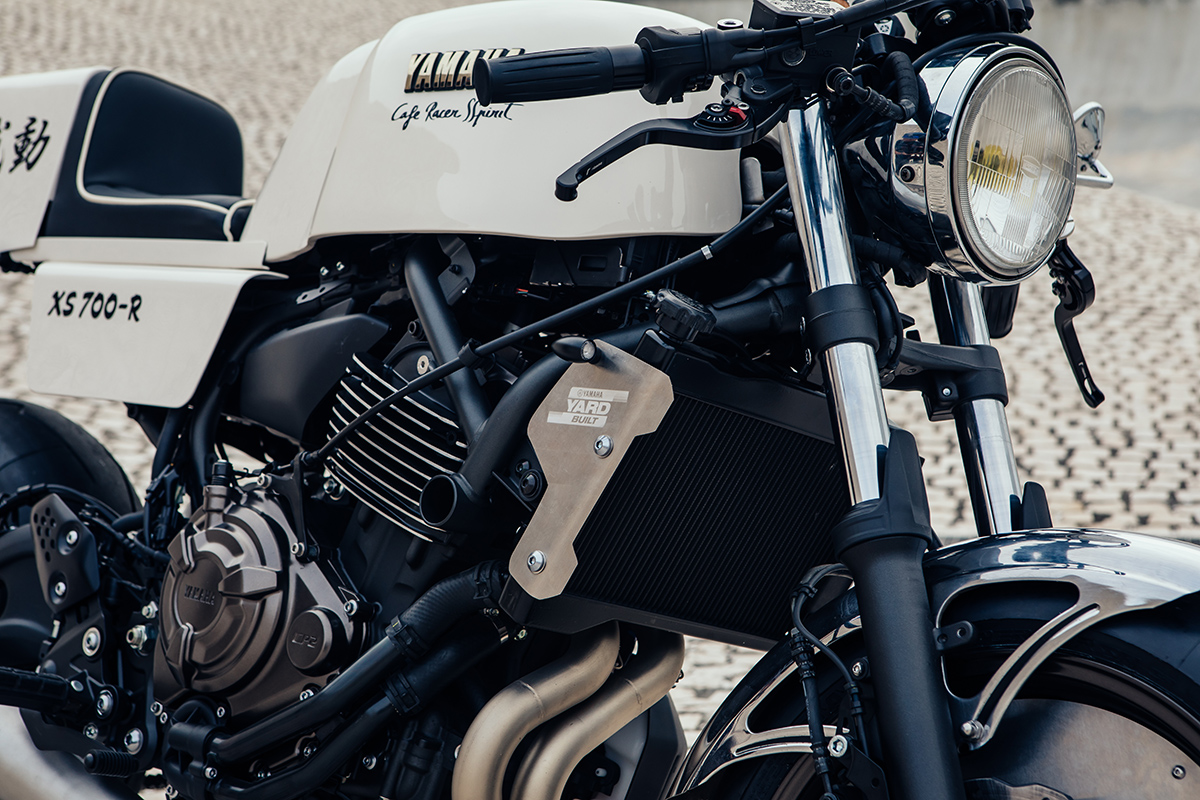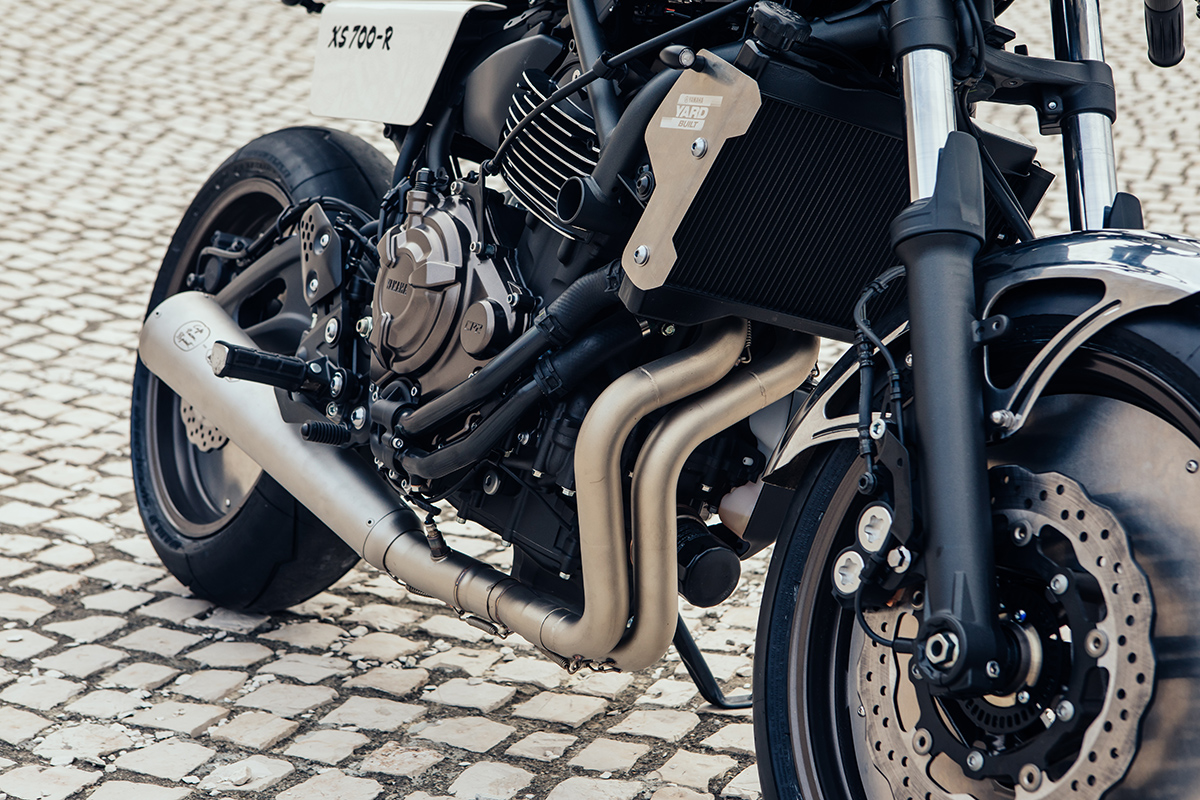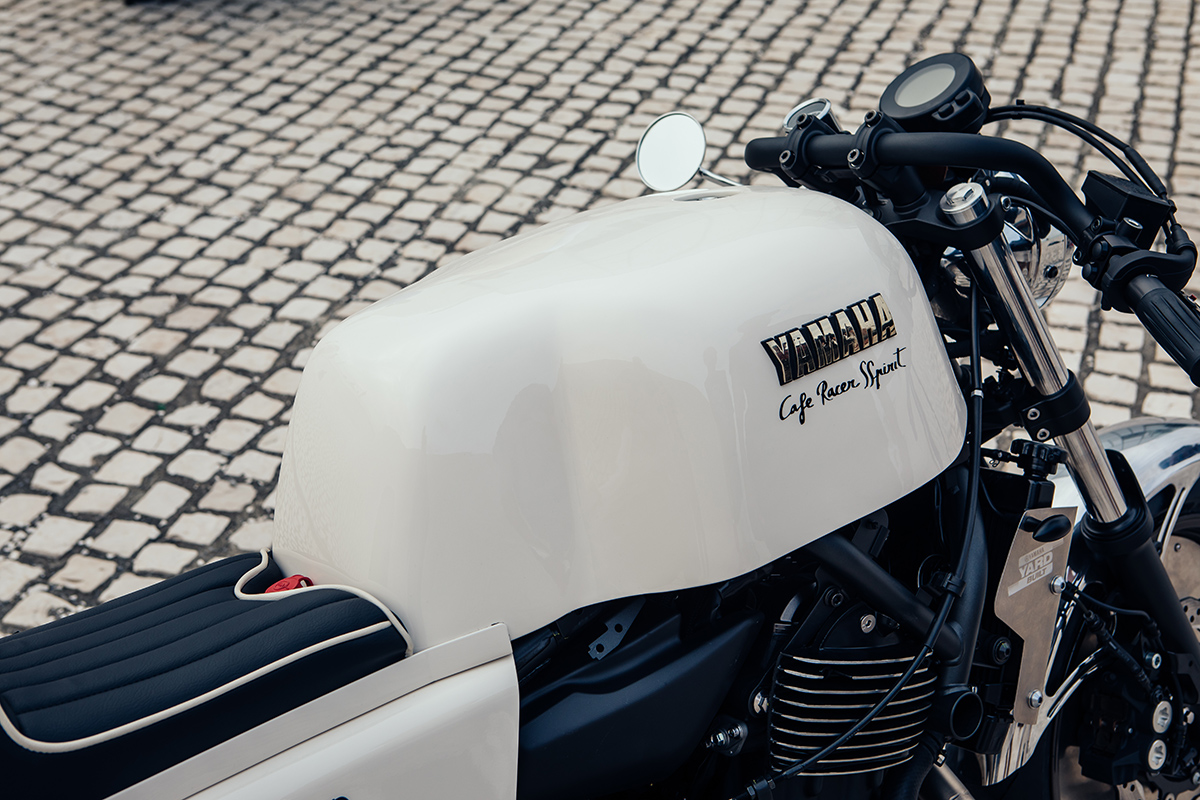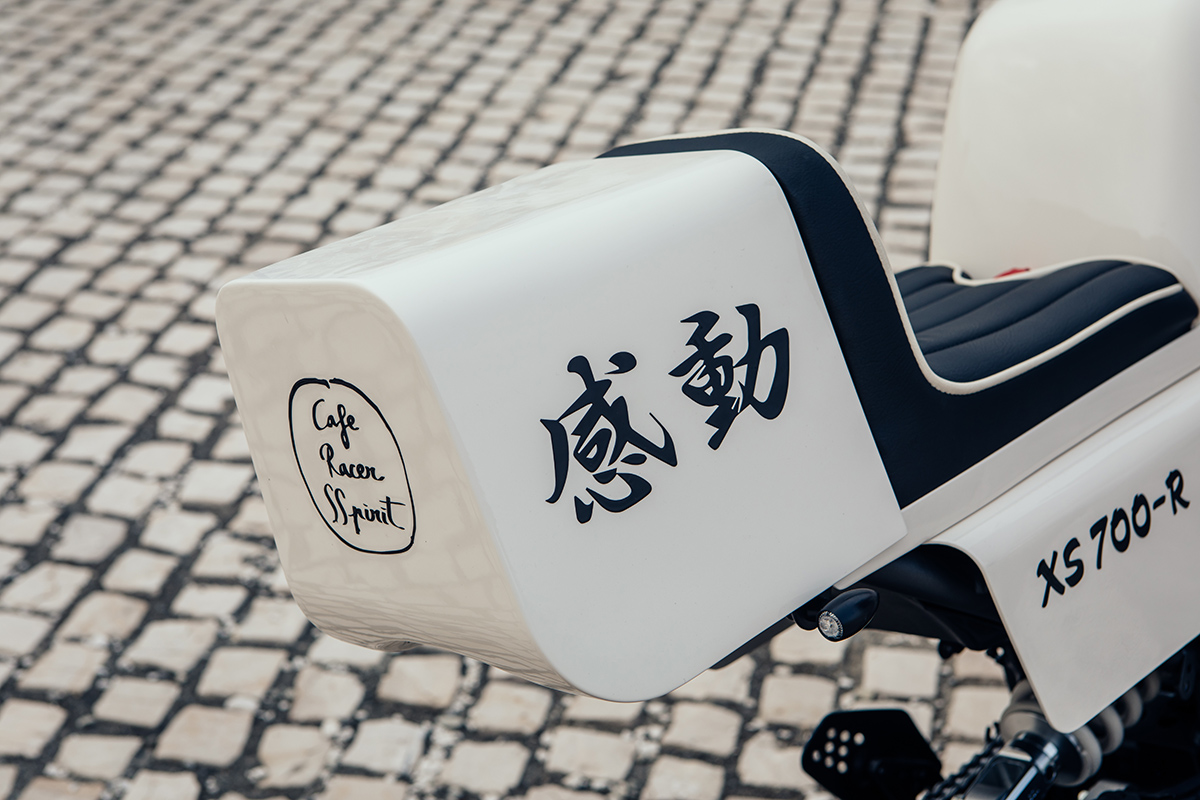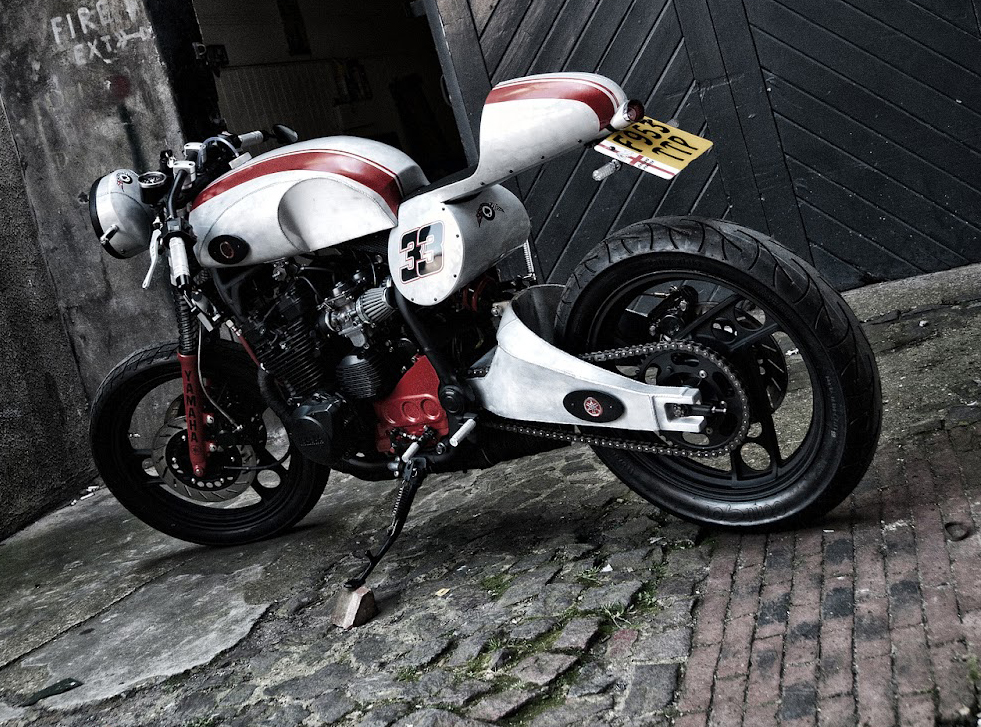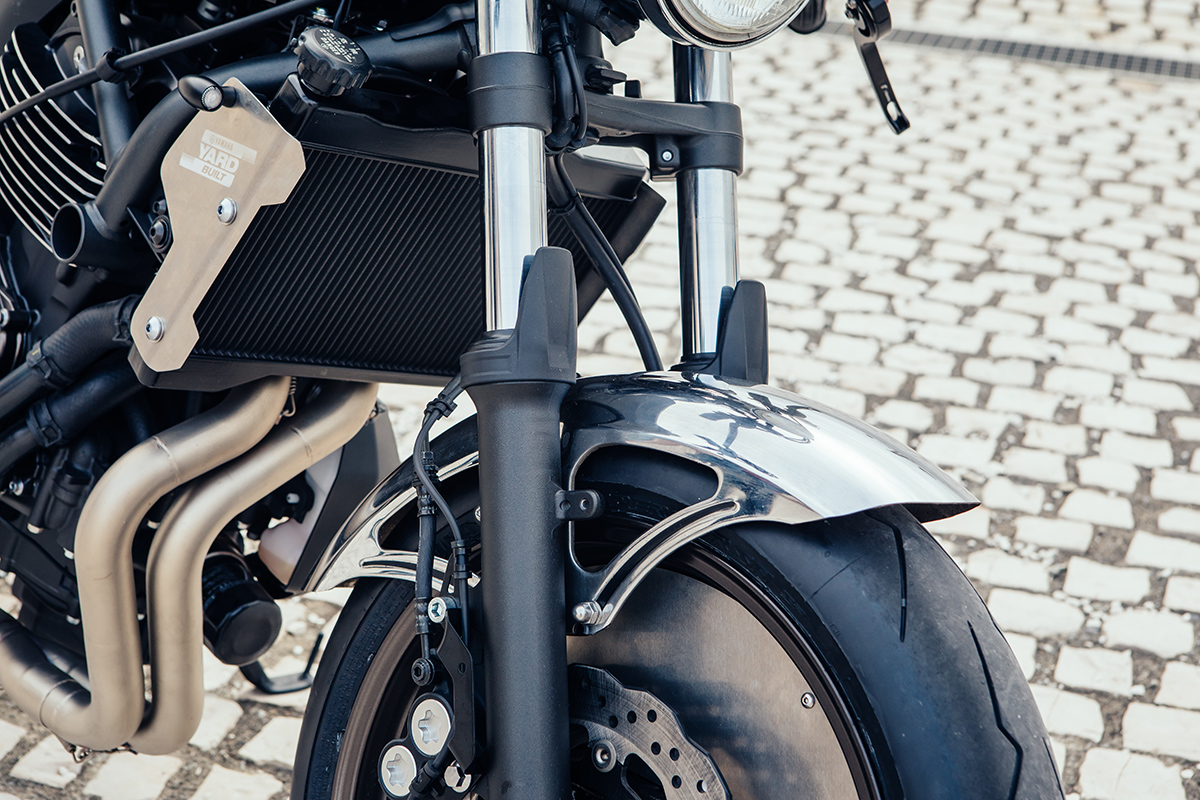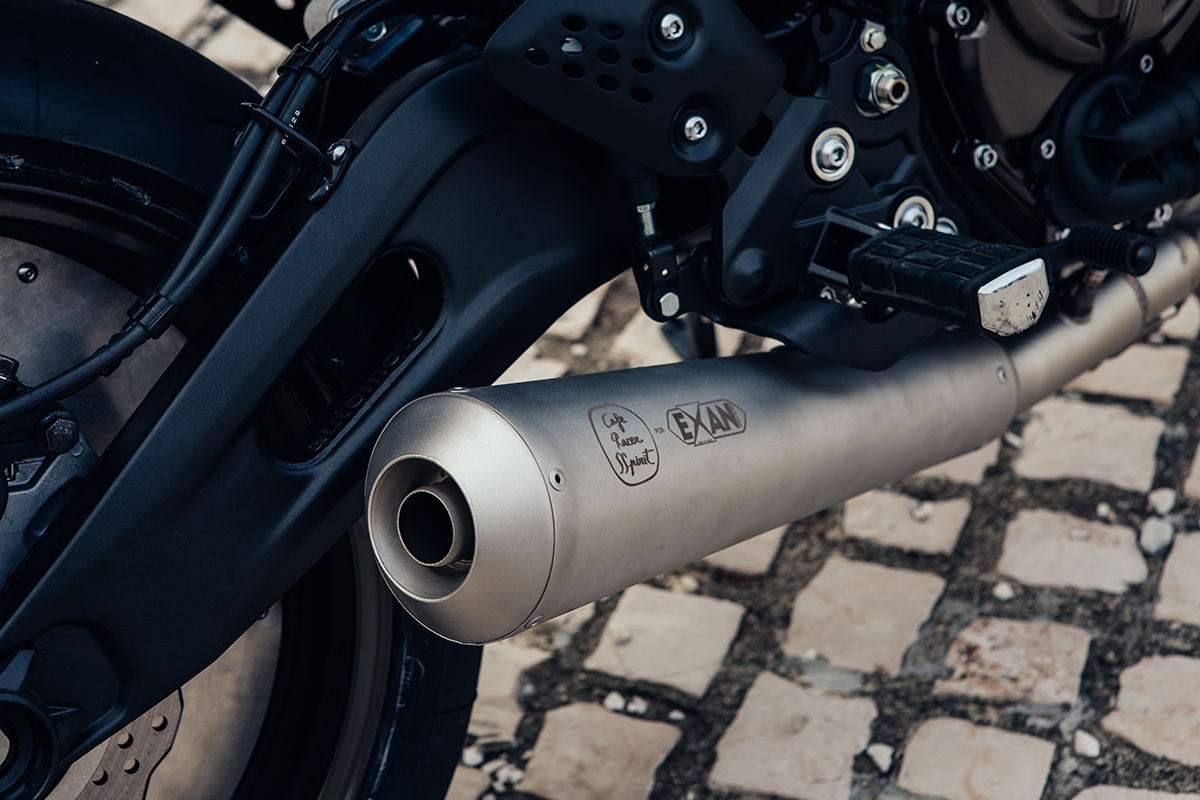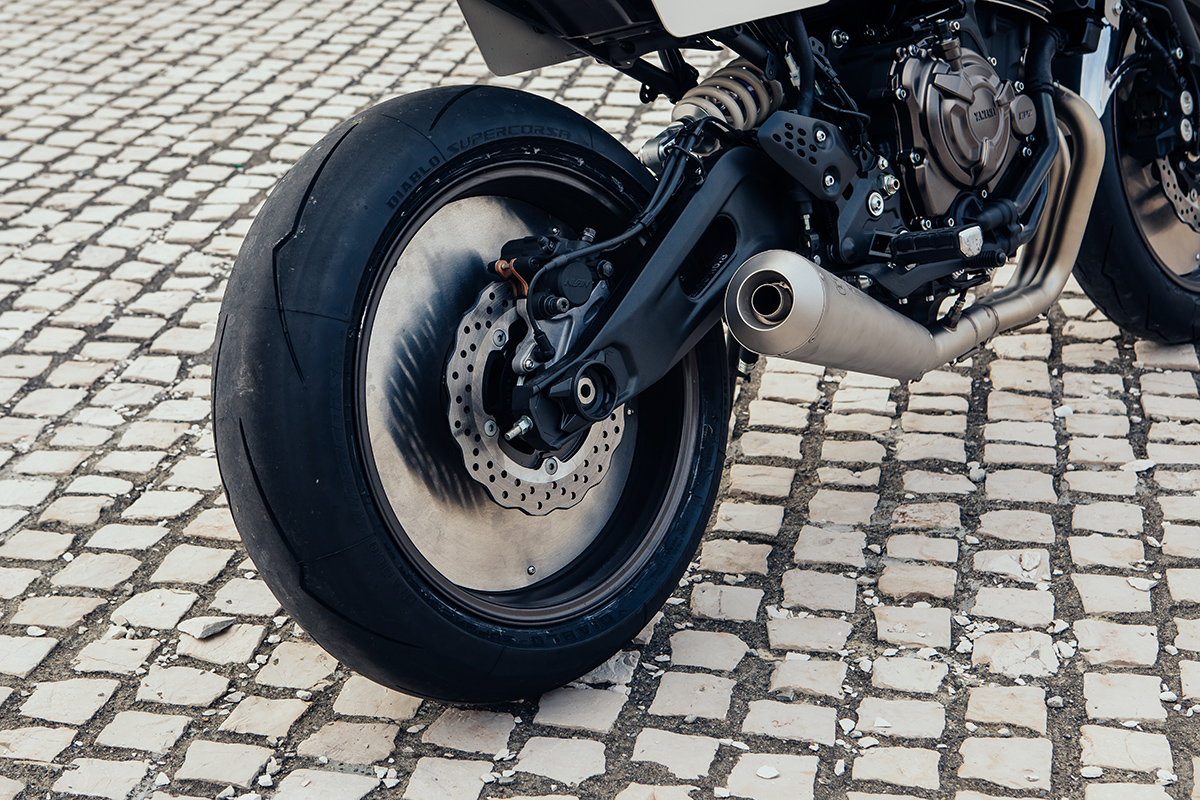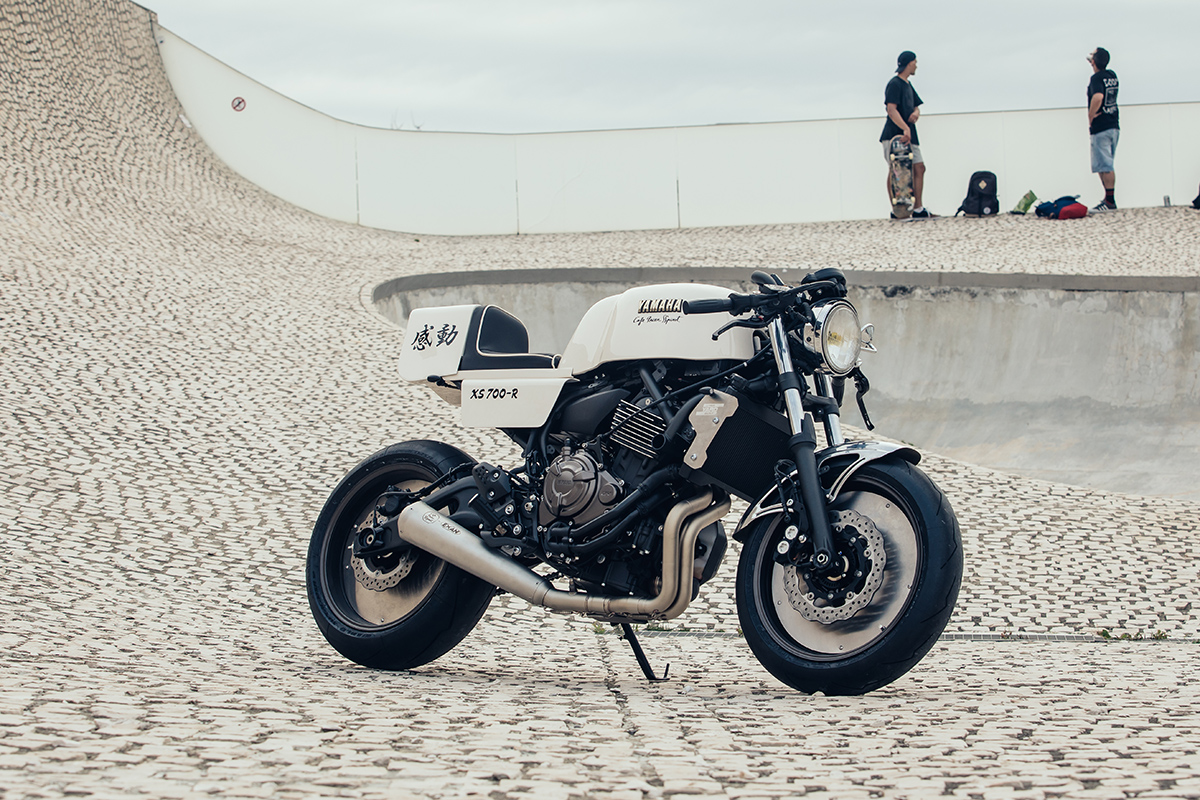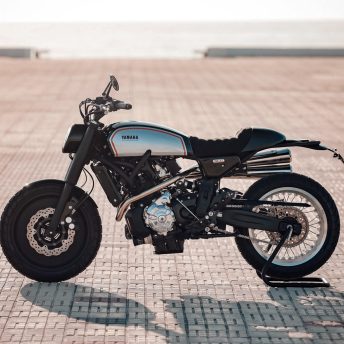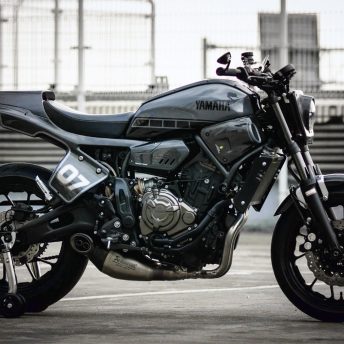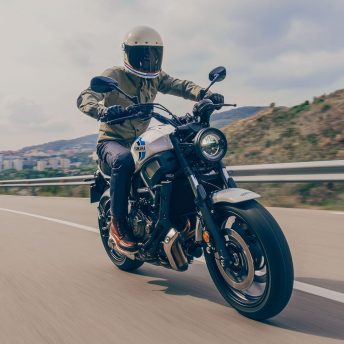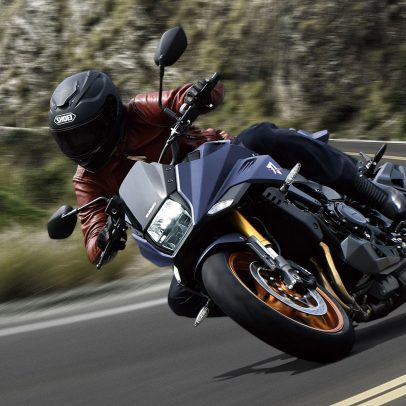For the Yardbuilt 2017 XSR700 project, Yamaha selected 7 workshops from different European locations to take part in the event. Representatives from Italy, Germany, France, UK, Portugal, Greece and Cafe Racer SSpirit from Spain were tasked with reimagining the 700cc modern classic with the only rules being that the end result should be street legal and that the bike’s frame should not cut or trimmed in any way. In February 2017 the bike arrived at the CRSS workshop, with a deadline of June 14th, the date of the 2017 Wheels & Waves festival, they didn’t waste any time getting started.
The CRSS concept was to transform their XSR700 into a 1970s/1980s inspired racer that met the street legal requirement of the Yardbuilt brief. Of all the bikes referenced during the development of their concept, it was Yamaha’s own TZ250 racer that played the biggest role. With its naked styling and unequivocally retro rear end, it was just the sort of styling statement they were after.
“We are used to working with bikes from the 70s and 80s,” says López. “Working with a brand new model is a great change. Everything works perfectly and you ‘just’ have to pay attention to the aesthetics.” When Yamaha designed the XSR700 they had customisation in mind. This provided CRSS with some convenient shortcuts to achieve their goal. The bike’s fuel tank, for instance, is a removable cover that conceals the fuel cells beneath and the subframe can be removed by simply unscrewing a couple of bolts. These 2 conveniences allowed CRSS to completely transform the look of the bike without compromising its construction.
“Once the whole fairing, seat, lights and accessories were removed, we started to plan how our new bodywork would fit the bike’s frame.” The solution López and his team devised was to fabricate a mockup using steel sheet shaped by hand. Once a desirable shape was achieved it was time to cast the bodywork, but rather than using a traditional composite such as fibreglass the CRSS team opted for a much more modern approach.
“We contacted a local 3D Printing Company called Tumaker 3D to scan and print our bodywork. Everything but the seat base, because of the rigidness needed, was recreated using 3D printing technology,” says López and it’s this approach that he hopes to utilize to produce these parts as a kit they can sell to XSR700 owners. The 3D printed components include the bikes new tank cover, entire tail end and side panels. Along with the 3D printed components, CRSS also designed side panels for the bike’s radiator and solid covers for the rims that we laser cut and engraved by Grabolaser.
Other modifications to the bike include the adaption of parts from a period correct 1982 Yamaha XV750. These parts include the new foot pegs, front fender and headlight. The bike’s clubman looking handlebars are the stock XSR700 item flipped upside down. provided a set of simplified hand controls and an M-Unit controller. The Rizoma catalog was utilized for indicators, levers, grips, a new filler cap and oil cap. For a slight boost in performance CRSS teamed up with exhaust specialists Exan who provided the bikes 2-into-1 exhaust system and muffler and they paired it with a K&N air filter. For handling tweaks, Hangon suspension parts were installed including the ‘vintage white’ color-matched mono-shock absorber.
After wowing crowds at the Wheels and Waves show the bike, which has been named ‘Kando’ (after Yamaha’s own corporate philosophy), is now doing a European tour before returning home the CRSS workshop. Once it’s there the kit and be refined ready for production and sale to the public. Let’s hope that happens sooner rather than later.
